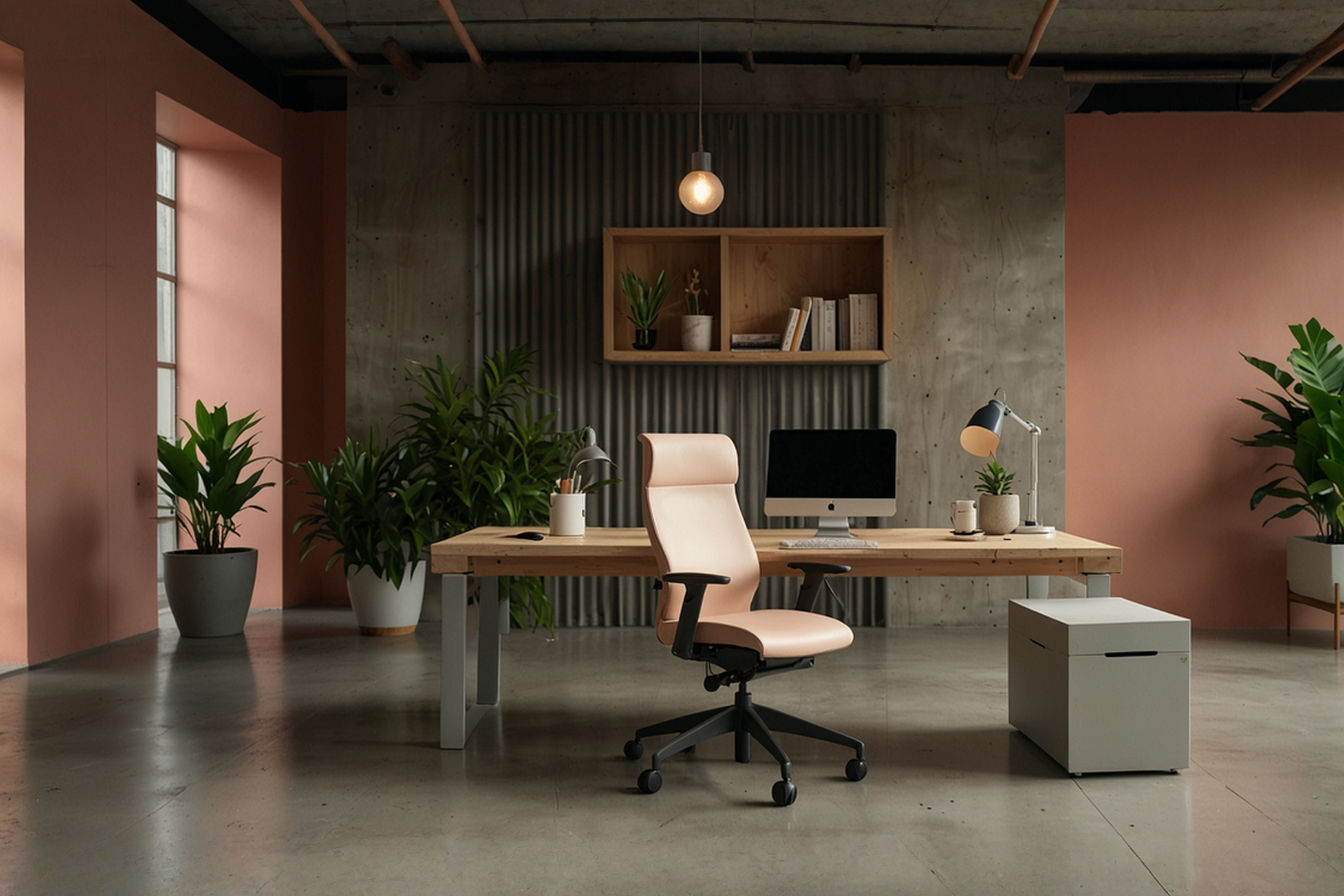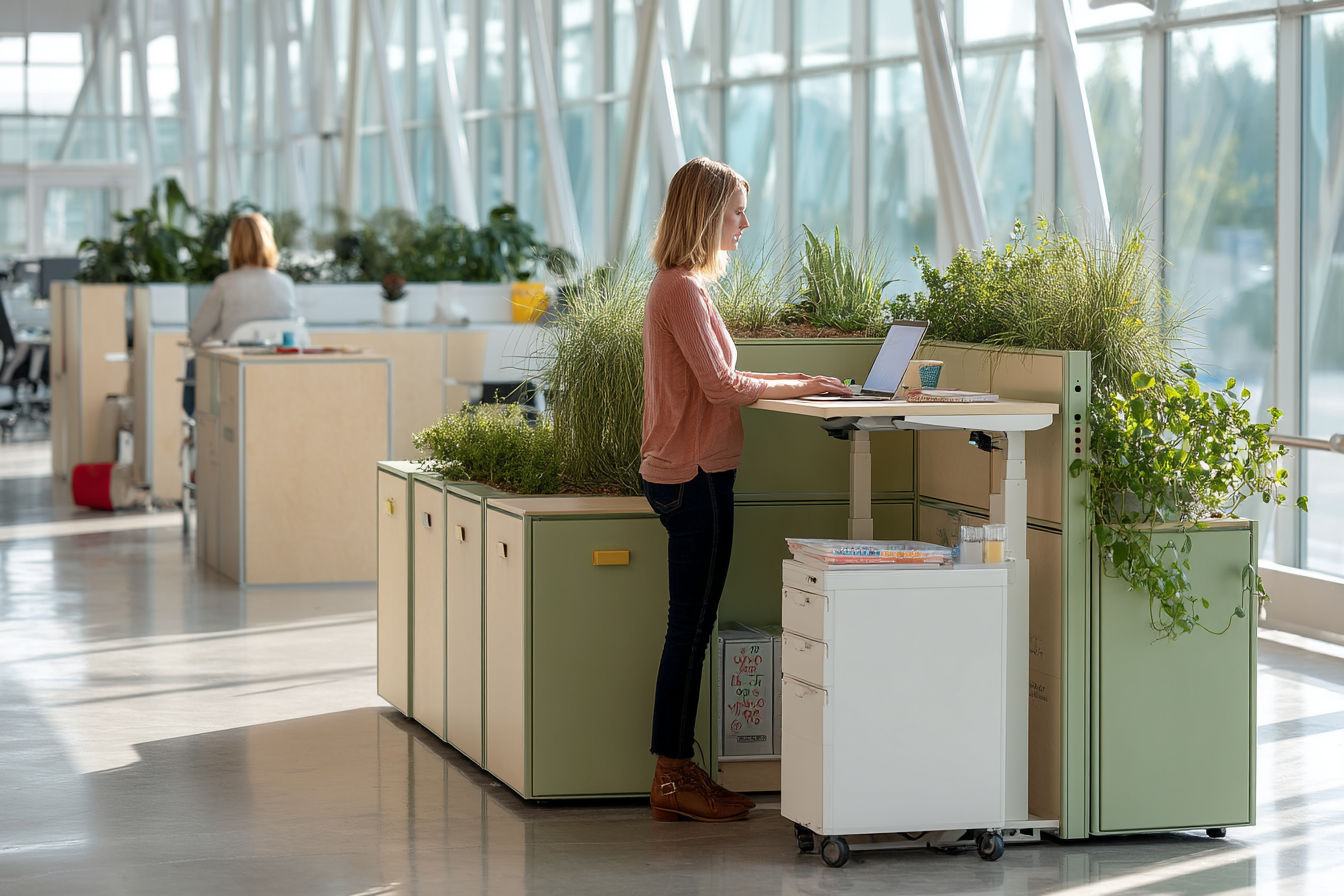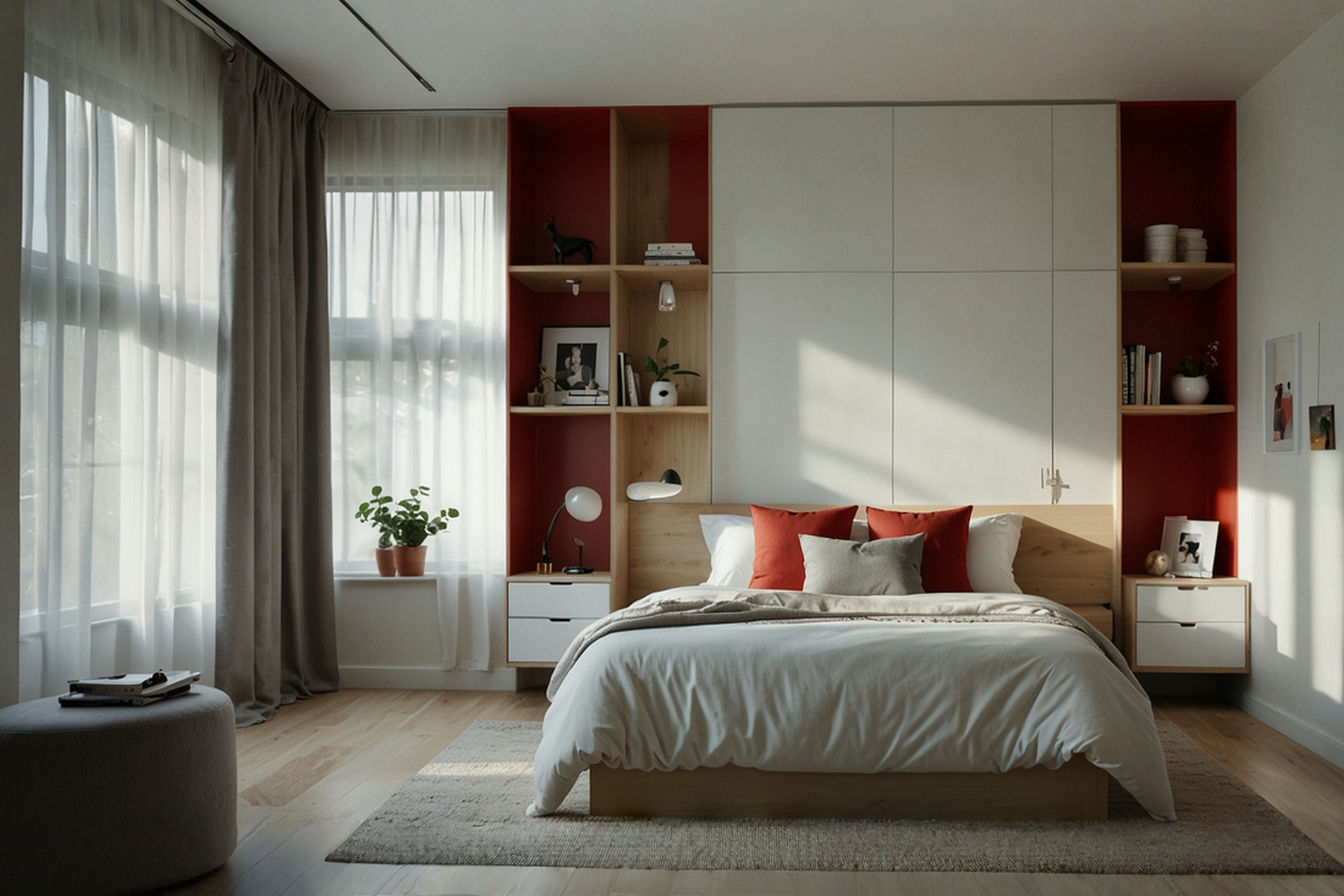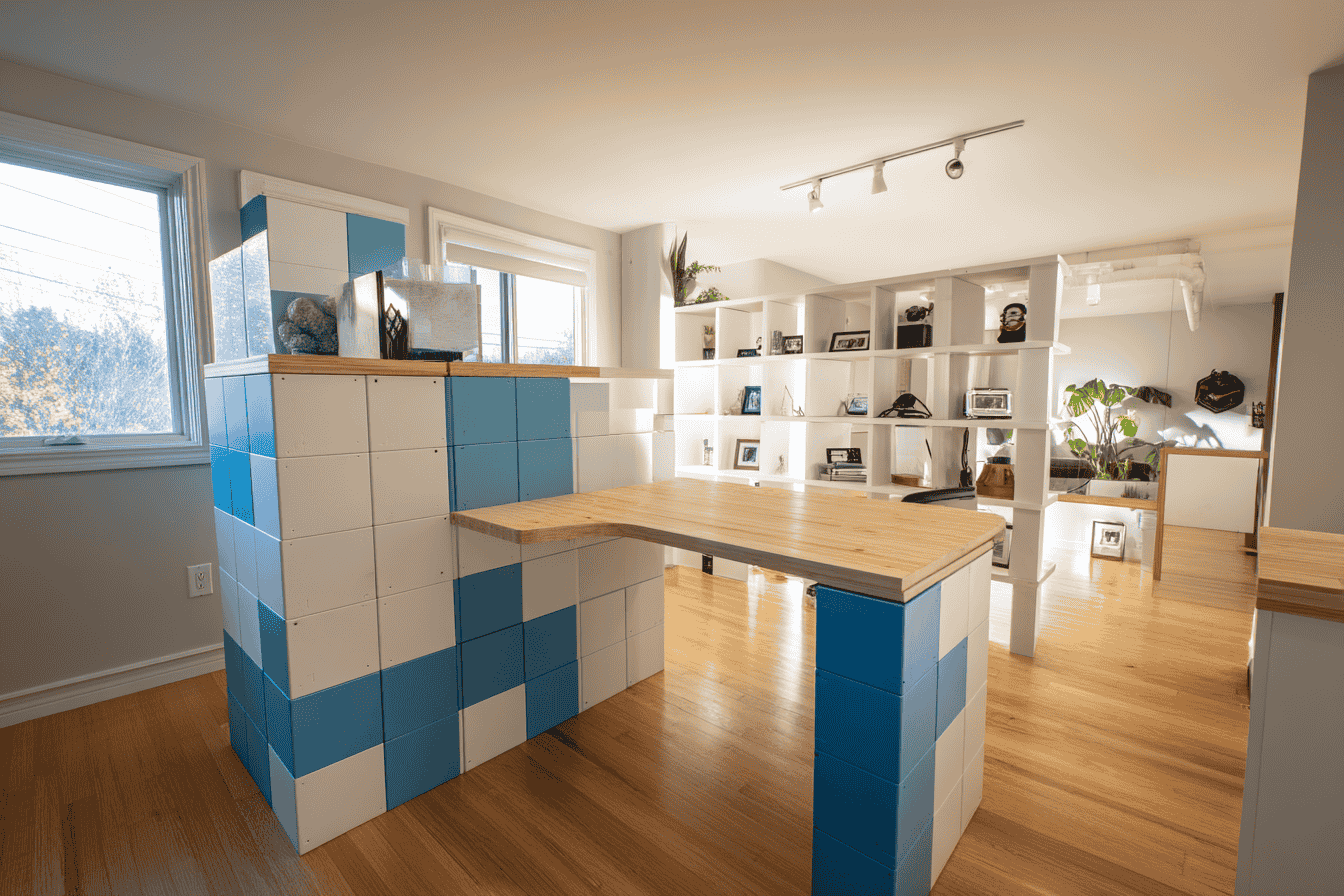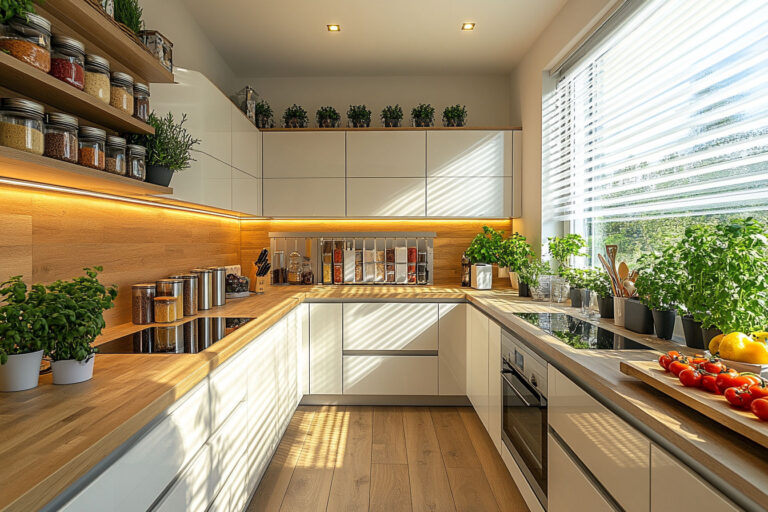This post may contain affiliate links. If you make a purchase through these links, we may earn a commission at no additional cost to you.
Living in a small apartment doesn’t mean you have to abandon your fitness aspirations. The challenge comes when trying to find room for dumbbells, yoga mats, resistance bands, and other workout essentials without turning your living space into a cluttered gym. Proper storage solutions keep your home organized and protect your investment in fitness equipment and make it more accessible for regular use.
This comprehensive guide explores thirty creative and practical storage ideas specifically designed for small apartments. These solutions will help you maintain an organized living space while keeping your fitness equipment readily available for whenever motivation strikes.
Vertical Storage Solutions
When floor space is limited, looking upward is your best strategy. Vertical storage maximizes your apartment’s unused wall areas while keeping equipment accessible.
1. Wall-mounted racks and hooks transform empty wall space into functional storage. Installing a pegboard system allows for customizable arrangement of hooks, shelves, and baskets to accommodate everything from resistance bands to lightweight dumbbells. The beauty of pegboard systems lies in their adaptability—you can reconfigure them as your equipment collection changes.
2. Over-the-door organizers utilize often overlooked spaces. These hanging systems, typically used for shoes or bathroom supplies, work wonderfully for fitness accessories like yoga blocks, resistance bands, and small hand weights. Select organizers with reinforced pockets for heavier items and secure attachment mechanisms to prevent door damage.
3. Corner storage towers maximize those awkward corner spaces in your apartment. Specialized corner shelving units fit snugly where two walls meet, offering multiple levels for storing equipment without consuming valuable floor area. Look for adjustable shelves to accommodate items of various heights, from foam rollers to kettlebells.
Hidden Storage Options
Sometimes the best storage solution is one you can’t see, especially in a small apartment where visual clutter can make spaces feel even more confined.
4. Under-bed storage containers utilize a substantial amount of typically wasted space. Low-profile containers designed to slide under bed frames provide perfect storage for yoga mats, resistance bands, and other flat or flexible equipment. Opt for containers with wheels for easy access and dividers to keep smaller items organized.
5. Behind furniture solutions create secret storage areas in plain sight. The narrow space behind sofas or bookshelves can accommodate slim equipment like yoga mats, foam rollers, or collapsible fitness items. Consider using tension rods or narrow shelving units designed for these tight spaces.
6. Inside ottoman and bench storage offers dual functionality. Hollow ottomans or storage benches serve as seating or footrests while concealing workout accessories inside. Choose options with sturdy construction that can support weight during both storage and use. These pieces provide convenient access to frequently used items while keeping them out of sight when not in use.
Multi-functional Furniture
Investing in furniture that serves dual purposes represents a smart approach for small apartment dwellers who exercise at home.
7. Storage benches that double as workout platforms offer exceptional versatility. These sturdy benches provide secure internal storage for smaller equipment while functioning as platforms for step-ups, box jumps, or weightlifting. Look for models with weight capacities appropriate for your fitness routine and padding that supports comfortable exercise movements.
8. Coffee tables with compartments transform your living room into an instant workout space. Tables with lift-tops or drawers can store resistance bands, small weights, and workout guides while maintaining your living room’s aesthetic appeal. Some innovative designs even convert to different heights for various exercise needs.
9. Sofas with integrated storage make efficient use of your largest furniture piece. Many modern sofas feature storage space beneath seats or within armrests. These convenient compartments keep smaller fitness items like hand weights, sliders, or massage balls within arm’s reach yet completely hidden when entertaining guests.
Ceiling and High Space Utilization
The area above eye level presents overlooked storage opportunities for fitness enthusiasts with limited floor space.
10. Pulley systems for heavier equipment utilize ceiling space intelligently. Installing a simple pulley mechanism allows you to hoist heavier items like medicine balls or kettlebells up and out of the way when not in use. This system proves particularly valuable for equipment that’s too heavy for wall storage but takes up significant floor space.
11. Ceiling-mounted racks work well for suspending items like yoga mats, jump ropes, or resistance bands. These horizontal racks attach securely to ceiling joists and keep equipment accessible yet completely off the floor. Always ensure proper installation according to weight specifications to maintain safety.
12. High shelf organization strategies make use of space near ceilings. Installing shelving in the upper portion of walls creates storage for less frequently used equipment or seasonal items. Transparent bins on these shelves allow easy identification of contents while keeping dust at bay. Remember to maintain safe access methods like step stools for retrieving these items.
Closet Organization for Fitness Equipment
Transforming existing closet space into an equipment storage zone maximizes your apartment’s built-in storage areas.
13. Specialized closet systems designed with fitness equipment in mind offer efficient organization. Adjustable shelving, built-in hooks, and custom compartments can accommodate equipment of various sizes and shapes. Consider removing the closet door and replacing it with a curtain for easier access during workouts.
14. Tension rods and hooks create adaptable storage within closets. Horizontal tension rods installed between closet walls provide hanging space for resistance bands and jump ropes. Adding hooks to the inside of closet doors creates vertical storage for smaller accessories. This system allows quick reconfiguration without permanent installation—ideal for renters.
15. Stackable bins and drawers maximize vertical closet space. Clear plastic containers that stack securely keep smaller items organized and visible. Labeled drawers sort accessories by workout type or equipment category. This modular approach allows your storage to evolve with your fitness journey and equipment collection.
Portable and Foldable Solutions
Equipment that doesn’t require permanent storage space offers particular advantages for apartment dwellers with active lifestyles.
16. Collapsible equipment options prioritize functionality without sacrificing living space. Foldable exercise bikes, collapsible weight benches, and adjustable dumbbells that combine multiple weights into one unit all minimize storage requirements. Consider these space-saving alternatives when purchasing new equipment.
17. Roll-away storage carts provide flexible organization that moves where needed. Slim utility carts with multiple tiers can hold various equipment pieces and roll into closets or corners when not in use. Look for carts with locking wheels for stability during equipment selection.
18. Foldable mats and lightweight gear store compactly in minimal space. Foldable yoga mats, rather than traditional roll-up versions, occupy less room when stored. Similarly, fabric resistance bands and inflatable exercise balls require substantially less space than their rigid counterparts when deflated or folded properly.
Decorative Storage Ideas
Fitness equipment doesn’t necessarily need hiding—sometimes displaying it artfully enhances your home’s aesthetic while keeping items accessible.
19. Aesthetically pleasing equipment displays treat fitness gear as design elements. Colorful dumbbells arranged on a decorative wall shelf or a beautiful yoga mat hung on a specially designed wall hook become functional art pieces. This approach works particularly well with equipment featuring coordinated colors or sleek designs.
20. Incorporating equipment into room decor normalizes fitness as part of your lifestyle. A weight bench with an attractive cover doubles as seating in a living area. Resistance bands in complementary colors stored in decorative baskets blend with your existing décor while remaining within reach for impromptu workouts.
21. Disguised storage solutions hide equipment in plain sight. Hollowed books that store small fitness accessories, decorative trunks containing larger equipment, and storage poufs hiding workout essentials maintain your apartment’s style while accommodating your fitness needs. These clever solutions particularly benefit studio apartments where separation between living and workout areas doesn’t exist.
Digital Alternatives to Physical Equipment
Sometimes the best storage solution involves owning less physical equipment in the first place.
22. Apps and virtual training tools reduce equipment needs substantially. Fitness apps offering bodyweight workouts, yoga instruction, or dance cardio eliminate the need for bulky machines while still providing effective exercise options. Many services now offer equipment-free routines specifically designed for small spaces.
23. Space-saving digital alternatives replace larger traditional equipment. Virtual reality fitness systems deliver immersive workouts with minimal hardware. Smart mirrors offering guided workouts require only wall space while providing instructor feedback. These technological alternatives deliver engaging fitness experiences without significant storage requirements.
24. Minimalist equipment choices focus on versatility and compact design. Resistance bands that replace multiple dumbbells, suspension systems that attach temporarily to doors, and multi-function tools that combine several pieces into one streamline your equipment collection. Prioritizing items that deliver multiple exercise options minimizes both cost and storage needs.
Maintaining Organization
Creating storage solutions represents only half the challenge—maintaining organization ensures long-term success.
25. Rotation systems for seasonal equipment prevent unnecessary clutter. Store off-season gear in less accessible areas while keeping current workout equipment readily available. This approach might mean keeping indoor cycling accessories accessible during winter months while storing outdoor running gear until spring returns.
26. Regular decluttering strategies maintain functional storage systems. Schedule quarterly evaluations of your fitness equipment. Donate or sell items you no longer use. Replace worn equipment rather than accumulating duplicates. This disciplined approach prevents storage areas from becoming overcrowded.
27. Equipment maintenance in small spaces extends the life of your fitness investments. Creating a small maintenance station with cleaning supplies and repair tools ensures equipment remains functional. Proper care prevents the need for redundant purchases that consume additional storage space.
Budget-Friendly DIY Storage Solutions
Creative thinking can produce effective storage options without straining your finances.
28. Repurposed household items often make excellent equipment organizers. Wine racks repurposed as dumbbell holders, shoe organizers converted for small fitness accessories, and old ladders transformed into vertical storage racks demonstrate resourceful problem-solving. Look around your apartment for items that might serve new purposes.
29. Affordable custom storage ideas achieve specialized organization without custom prices. Combining basic hardware store components like PVC pipes to create yoga mat holders or using inexpensive towel bars to hang resistance bands demonstrates how simple materials can solve specific storage challenges.
30. Simple DIY mounting projects require minimal tools yet deliver significant space savings. Installing basic utility hooks for jump ropes, creating wall-mounted holders from wooden dowels, or constructing simple shelving from brackets and boards represents achievable projects even for novice DIYers with limited tools and rental-friendly installation methods.
Renting and Storage Unit Considerations
Sometimes external solutions complement in-apartment storage strategies.
When to consider external storage depends on several factors. Seasonal equipment used occasionally might justify external storage costs. Similarly, particularly large equipment might be better housed elsewhere if used infrequently. Calculate the cost-benefit ratio of monthly storage fees versus the convenience of in-home access.
Equipment lending and borrowing networks reduce personal storage needs. Community groups facilitating equipment sharing, apartment building common equipment, or formalized lending libraries decrease individual ownership requirements. These collaborative consumption models benefit both storage constraints and budgets.
Community gym alternatives eliminate some home storage requirements. Apartment complex fitness centers, neighborhood gyms, or workplace facilities provide access to larger equipment without home storage concerns. Strategically planning which exercises happen outside your apartment reduces the equipment you must store at home.
Real-Life Examples
Seeing how others solve similar challenges offers both inspiration and practical guidance.
Before and after transformations demonstrate remarkable improvements. Small apartments transformed from cluttered chaos to organized fitness spaces through thoughtful storage solutions show what’s possible. These dramatic changes often come from implementing several complementary storage strategies rather than seeking one perfect solution.
Small apartment success stories prove fitness goals and limited space can coexist. Profiles of apartment dwellers maintaining serious fitness routines in spaces as small as 400 square feet demonstrate creative problem-solving and prioritization. Their experiences highlight that limitations often spark innovation.
Creative solutions from fitness enthusiasts reveal unexpected approaches. A fitness instructor storing yoga blocks as decorative elements in a bookcase or a bodybuilder utilizing custom-built under-bed drawers for weight plates illustrates how specialized needs inspire unique solutions. These examples encourage thinking beyond conventional storage products.
Balancing Aesthetics and Functionality
Creating a livable space that accommodates fitness equipment requires thoughtful design considerations.
Color coordination strategies create visual harmony. Selecting equipment in colors that complement your apartment’s color scheme helps fitness gear blend into your overall aesthetic. Similarly, choosing storage containers in coordinating hues minimizes visual disruption even when equipment remains visible.
Design principles for equipment placement maintain living space functionality. Positioning equipment and storage solutions in ways that preserve movement pathways through your apartment prevents the feeling of living in a gym. Consider sightlines from entrance areas and seating positions when determining where equipment will be stored or displayed.
Creating distinct zones helps mentally separate living and workout areas. Using room dividers, area rugs, or furniture arrangement to delineate exercise space from relaxation areas enhances both functions. This zoning approach proves particularly valuable in studio apartments or open-concept layouts.
Conclusion
Storing fitness equipment in a small apartment presents challenges but certainly not insurmountable ones. The thirty strategies outlined here demonstrate that with creativity, planning, and the right approach, you can maintain an organized living space while keeping your fitness equipment accessible for regular use.
The most successful storage solutions typically combine several of these approaches rather than relying on a single strategy. Vertical storage might work perfectly for yoga accessories while under-bed containers better suit larger equipment. Multi-functional furniture might serve everyday needs while specialty closet organization handles seasonal items.
Remember that the ultimate goal extends beyond simply finding places to put things. Effective storage solutions should make exercise more convenient, protect your equipment investment, and maintain your apartment’s function as a comfortable living space. When storage solutions achieve these objectives, your fitness journey and your home life both benefit.
By implementing these practical ideas, you can transform the challenge of limited space into an opportunity for creative organization—ensuring your fitness goals and living space requirements exist in perfect harmony.

